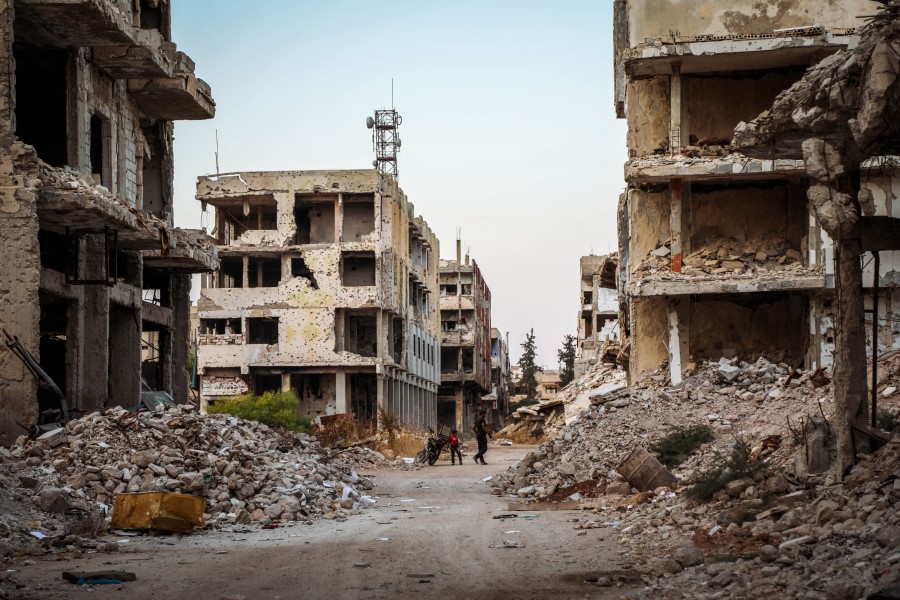Wars have always been fought between people. Human conflict is as old as humanity itself. There have literally been thousands, or even tens of thousands of wars, throughout human history. However, one thing that’s strange is that only two of these conflicts have been designated as world wars. So, what actually makes a conflict a world war?
There is no set definition of a world war. However, it is generally considered that a war becomes a world war when there are multiple theatres of conflict across many continents involving a large number of countries. In history only two conflicts have been considered world wars.
… but that’s just an overview. In order to fully understand what makes a war a world war, we need to look in a bit more detail.
What Would Be Considered A World War?
As we’ve said, there is no set definition for what makes a world war. There have only been two wars in history that have been considered world wars – these were the conflicts fought between 1914 – 1918, and 1939 – 1945. If we’re going to understand why these are considered world wars, when other conflicts are not, we need to look at four key characteristics these conflicts had that other didn’t:
- A large number of countries participating in the conflict
- Battles fought across many geographical locations
- Theatres of conflict on multiple contentment’s
- Extensive casualties and destruction
Ok, so now let’s take a quick look at each of these…
A Large Number Of Countries Participating In The Conflict
A first factor that often makes a war a world war is that there are a large number of countries participating in the conflict. Many wars are only between two countries, or armed groups, however, for a war to be considered a world war, many more countries need to be involved. With that said, not every conflict that has multiple actors engaged is considered a world war, which brings us on to point number two…
Battles Fought Across Many Geographical Locations
For a war to be a world war the fighting needs to take place across many geographical locations. Essentially, fighting must happen almost all around the world. World War Two was a truly global war with battles in Europe, Asia, and North Africa. World War One also had theatres of combat in Europe, the Middle East and Africa. The fact that fighting took place across many parts of the world is a key factor in making these world wars.
Theatres Of Conflict On Multiple Contentment’s
As well as battles in multiple geographical locations, many would argue that fighting needs to take place across different continents for a war to be considered a world war. For example, some argue that the Second Congo War was ‘Africa’s World War’. However, as fighting only took place on the continent of Africa, most people would argue this was a widespread regional conflict, and not an actual world war.
Extensive Casualties And Destruction
A final factor that makes a war a world war is the extent of the death and destruction. The term ‘world war’ is only used to describe enormous conflicts that take millions of lives all around the world. Smaller conflicts that have less casualties and more limited destruction are not referred to as world wars.

How Many Countries Are Needed For A World War?
There is no set number of countries needed for a war to be designated a world war. However, the two worlds wars that have occurred in history have both had dozens of countries involved in the fighting.
At it’s peak, World War One involved over 30 nations. World War Two had as many as 50 or more nations involved in the fighting. However, although these wars had huge numbers of countries involved, there were other factors, including the wide range of locations that the war was fought, that made them be viewed as world wars.
Who Declares A World War?
No one officially declares a world war. A war is referred to as a world war when the general public begins to use the term to refer to the conflict. Generally this happens when a war has many nations involved from all around the world.
As we’ve said, there is no official designation of a world war. The term is used when it enters the public discourse and large numbers of people begin referring to a conflict as a world war. For World War One and Two, this began happening either soon after the war ended or even during the wars. For the Second Congo War, some academics may refer to it as ‘Africa’s World War’, however that phrase has not entered regular use and so most people still refer to it as just the ‘Second Congo War’, and not as a world war.
What Is The Difference Between A War And A World War?
A final question we must consider in order to determine what makes a war a world war is the difference between world wars and more regular conflicts. Below is a breakdown highlighting the key differences.
| War | World War |
| Conflict involving only a few countries | Large number of countries from around the world involved in conflict |
| Fighting limited to few geographical locations | Battles fought across many geographical locations |
| Extent of casualties and destruction limited to fewer areas | Casualties and destruction spread across large areas |
| Many countries use proxies to limit involvement in conflict | Many countries directly involve themselves in the conflict |
A first difference between a war and a world war is how many countries are involved. Most wars are fought between two nations or armed groups. Some wars may have more combatants. However, world wars require a significant number of nations or armed groups to be involved. There is no set definition, but the two world wars of the 20th Century had more than 30 and 50 countries involved in them respectively. This large number of countries involved is one reason these conflicts are considered world wars.
A second difference between a war and a world war is where it is fought. World wars have battles across multiple continents and many locations. Non-world wars are usually fought within one country or across a limited geographic area.
A third difference between world wars and other wars is that the death and destruction is much more extensive in world wars. As more armies are fighting in more locations during a world war, the extent of casualties – both civilian and military, as well as the range of destruction caused, is much greater.
A final difference between a war and a world war is that during most wars’ countries use proxies in order to fight on their side, rather than engaging their own armed forces. In world wars, all countries involved engage in the fighting. A proxy is when a nation not directly involved in a conflict supports one side, or a specific armed group, in order to achieve an outcome that is strategically beneficial to them. It means they do not need to engage their own military. This doesn’t really happen in world wars, where the fighting is so extensive that countries engage with their own armed forces.


